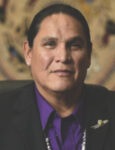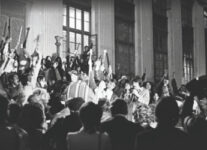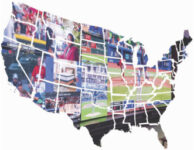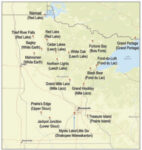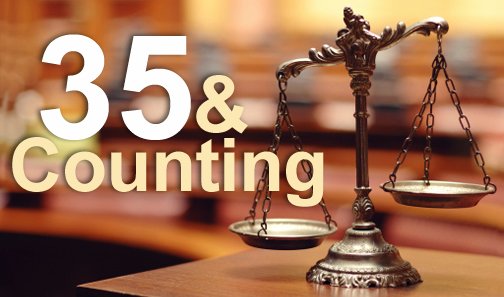
"Symbol of law and justice in the empty courtroom, law and justice concept."
February 25, 2022 marked the 35th anniversary of an important event in the history of tribal government gaming. On that day in 1987, the U.S. Supreme Court issued its opinion in California v. Cabazon Band of Mission Indians, 480 U.S. 202 (1987), a ruling that has come to be known as the “Cabazon decision.”
In that 18-page opinion, a 6-3 majority of the court upheld the right of the Morongo and Cabazon Bands of Mission Indians to conduct poker and high-stakes bingo games on their reservations, and denied the state of California any authority to regulate or prohibit those tribal activities.
The Cabazon decision marked an important tribal victory in what had been a long and contentious legal battle between tribes and states over which government had the power to authorize and regulate tribal gaming. Today we have a large, mature and profitable Indian gaming industry in this country. But 35 years ago, the future of tribal gaming was not at all clear.
From the very beginning, states vigorously opposed any efforts by Indian tribes to offer gaming activities to non-members. While tribes argued that, as governments, they had the right to establish laws, including gaming laws, on their reservations, the first Indian gaming cases from the early 1970s generally favored the states’ position of opposition to tribal gaming activities. These early tribal defeats were bolstered by the strong political opposition to tribal gaming by the Nevada gaming industry and national horse racing organizations.
But in 1976, the Supreme Court issued a ruling in an Indian tax case from Minnesota that offered a new and different method of analysis for certain tribal-state jurisdictional disputes. That analysis, Bryan v. Itasca County, 426 U.S. 373 (1976), proved to be pivotal as later tribal gaming cases made their way through the federal courts.
Cabazon was not the first Indian gaming case, but it was the first to reach the U.S. Supreme Court. The court had been asked to review other tribal gaming disputes in 1981 and 1982, but had declined to do so. By 1985, however, Indian gaming had exploded across the country, with more than 100 tribal gaming facilities nationally, with 25 of those in California alone. So in April 1986, when the state of California asked the court to review the Cabazon Band’s lower court victory, it was not a complete surprise that the court agreed to hear the case.
While the Cabazon case involved only two small tribes from California, both sides clearly understood that the decision would have national implications. As a result, 27 states filed four amicus (“friend of the court”) briefs supporting California’s position. Indian Country responded in kind, with 66 tribes filing eight briefs supporting the Morongo and Cabazon Bands.
Legal Arguments
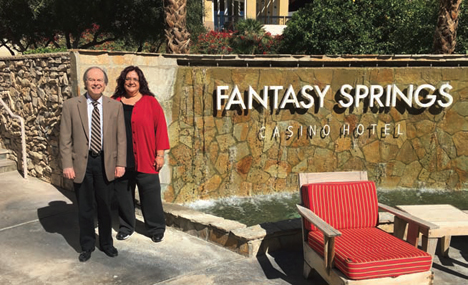
The author with Brenda Soulliere at the Cabazon Band’s Fantasy Springs Casino Hotel. Soulliere was a cashier in the tribe’s bingo hall when it was raided by California authorities, and eventually led to U.S. Supreme Court’s landmark Cabazon Decision.
The Cabazon case was argued before the Supreme Court on December 9, 1986 and decided on February 25, 1987. While the decision of the court addressed many legal issues, two in particular are worthy of note.
The first was the organized crime issue. Looking at it 35 years later, it seems hard to believe that a major element of the states’ opposition to tribal gaming was the argument that tribes would be powerless to prevent “organized crime” from infiltrating their gaming operations. According to the state of California, “the possibility that the (tribal) bingo operations may be taken over by organized crime is a very serious concern ….”
But when asked by one of the justices at oral argument whether there was any evidence that organized crime had infiltrated the bingo operations of the tribes, the attorney for the state had to concede there was not. Further, the same issue had been argued to the lower courts in the Cabazon litigation and the Ninth Circuit Court of Appeals had earlier found that “there is no evidence whatsoever that organized crime exists on these Indian reservations.”
So, despite the strong efforts of the state to interject the organized crime threat into the case, the Supreme Court rejected that effort by noting that this theoretical concern by the state, while “legitimate,” was supported by no evidence and therefore could not overcome the strong tribal and federal interests it found in promoting Indian gaming.
The second important legal issue addressed by the court in the Cabazon decision was the applicability of the 1976 Bryan v. Itasca County tax decision to tribal gaming activities. In Bryan, the court had analyzed a 1953 federal law that was applicable in Minnesota, California and several other states. The court concluded that this federal law authorized those states to apply their criminal laws (i.e., those laws that prohibited certain conduct) to tribal activities on reservations in those states, but did not give the states the jurisdiction to enforce their civil laws (i.e., those laws that allowed but regulated conduct) against tribes. The issue in the Cabazon case was whether California’s bingo and poker laws should be characterized, to use Bryan’s terminology, as “civil-regulatory” or “criminal-prohibitory.”
At oral argument, this distinction was the subject of much discussion. Justice Antonin Scalia, in his first year on the high court, was particularly interested in this question and eventually made it quite clear that, in his view, California’s $250/game limit on charitable bingo games was “criminal-prohibitory” in nature and, therefore, enforceable by the state against the tribes.
And Chief Justice William Rehnquist—no friend to Indian tribes during his tenure on the court—seemed to want to limit Bryan to its particular facts when he stated that “all Bryan held was that a tax statute couldn’t be applied in Itasca County.”
In the end, however, a majority of the court (including the chief justice) reaffirmed the validity of the Bryan analysis and found the state’s bingo and poker laws to be civil-regulatory. As the court put it: “In light of the fact that California permits a substantial amount of gambling activity, including bingo, and actually promotes gambling through its state lottery, we must conclude that California regulates rather than prohibits gambling in general and bingo in particular. As a result, the court found that the state of California could not enforce its state laws against the tribes’ gaming activities, handing tribes nationally a major victory.”
Still Relevant
So, what is the legacy of the Cabazon decision? Why is it still relevant 35 years later?
First, the Cabazon decision led directly to the enactment of the Indian Gaming Regulatory Act. The three dissenting justices in the Cabazon case made much of the fact that Congress had not expressly authorized tribal gaming through legislation. Congress filled that void the following year. While Congress had considered Indian gaming legislation as early as 1983, no agreement could be reached until Cabazon was decided in 1987. That decision gave renewed impetus to those efforts, and in the fall of 1988, IGRA was passed by both houses of Congress and signed by President Ronald Reagan.
While IGRA was far from perfect and did, in fact, cut back some of the rights that the tribes had won in Cabazon, 35 years of experience has proven that IGRA provided a regulatory framework that has worked reasonably well for most tribes and has allowed tribal gaming to expand exponentially since its modest beginnings in the late 1970s.
Second, the Cabazon decision, coupled with IGRA, has dramatically improved the economies of much of Indian Country in the U.S. While the economic benefits of Indian gaming are not spread evenly among the tribes, the fact is that 250 tribes in 29 states are now operating more than 500 gaming facilities, many of them as large and luxurious as any in the world. Those facilities employ more than 350,000 people nationally and are pumping tens of billions of dollars of revenue into Indian Country annually, revenues that are allowing tribes to provide unprecedented numbers of programs, services and benefits to their members, and in many cases to their neighboring communities as well.
Finally, in addition to their direct benefits, tribal gaming revenues have provided much of Indian Country with the economic and political means to broaden and strengthen their sovereign powers. A number of major gaming tribes have taken their management expertise and financial resources and expanded into off-reservation gaming activities in Nevada, New Jersey, Pennsylvania and even overseas markets. Additionally, in many parts of the country, tribes have become important political players. In addition to campaign contributions, tribal votes can determine close elections in states like Arizona, California and Oklahoma—and politicians know that.
Tribes are also asserting their rights to surface and groundwater resources in ways and places not seen before. And many tribes, recognizing that gaming need not be an end to itself, are actively diversifying their tribal economies in important and creative ways, including clean energy projects, expanded agricultural efforts and the retail/commercial development of reservation lands.
Thirty-five years ago, no one could have predicted the dramatic impact the Cabazon decision would have on Indian County. February 25, 2022: an important anniversary in the history of tribal government gaming.
This article is dedicated to the citizens of the Cabazon Band: a small tribe that made a big difference.







